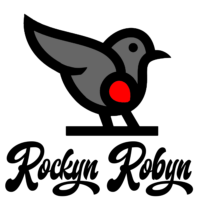Portfolio Development and Feedback Loops
Developing a professional portfolio is an essential strategy for showcasing your skills and accomplishments, particularly in creative or project-based fields such as graphic design, writing, software development, and architecture. A well-maintained portfolio not only demonstrates your expertise and unique style but also serves as a practical tool in career advancement. Coupling this with a structured feedback loop can enhance your learning and growth dramatically. Here’s how you can effectively develop and utilize your portfolio along with feedback mechanisms:
Step 1: Assemble Your Best Work
Select High-Quality Pieces: Choose work that best represents your skills, style, and the range of projects you have completed. This selection should include pieces that demonstrate your process from conception to completion to give potential clients or employers insight into how you work.
Organize by Theme or Skill: Depending on your field, organize your portfolio in a way that makes sense for viewers to navigate easily. For instance, a graphic designer might categorize work by type (e.g., logos, web designs, advertisements) or by industry (e.g., fashion, technology, healthcare).
Include Detailed Descriptions: For each project, include a brief description that outlines the project goals, your specific role, the tools and techniques used, and the outcomes. This context helps viewers understand not just what you did, but how and why you did it.
Step 2: Choose the Right Platform
Digital Portfolio: Use online platforms like Behance, Dribbble, or a personal website to create digital portfolios. These platforms are particularly useful as they are easily accessible and can be shared widely.
Physical Portfolio: In some fields, such as fine art or printed media, a physical portfolio might be necessary. Ensure it is professionally bound and easy to transport.
Hybrid Approaches: Consider maintaining both digital and physical portfolios if your field benefits from both formats.
Step 3: Solicit Regular Feedback
Seek Peer Reviews: Regularly share your portfolio with peers and mentors to get constructive criticism. Choose individuals whose opinions you trust and who understand your industry.
Client Feedback: After completing projects, ask clients for feedback not only about the final product but also about your process. Incorporate this feedback into future projects and portfolio updates.
Online Interactions: Utilize comments and critiques from online portfolio platforms as these can provide diverse opinions and suggestions for improvement.
Step 4: Update and Refine
Regular Updates: Continuously update your portfolio as you complete significant projects. This keeps your portfolio fresh and relevant.
Respond to Feedback: Make adjustments based on the feedback you receive. If several reviewers suggest improving certain skills (e.g., software proficiency, design principles), take action to enhance these areas.
Refine Presentation: As you receive feedback about both the content and the presentation of your portfolio, refine how you present your work to better engage your audience.
Step 5: Use Feedback Loops to Improve
Set Improvement Goals: Based on feedback, set specific, measurable goals for improvement. For example, if feedback consistently points to issues with color usage in your designs, you might set a goal to study color theory or experiment with new palettes.
Document Changes and Results: Keep a log of the feedback received and the changes made. This will help you track whether the changes are effective and understand how your skills evolve over time.
Review and Adjust Goals Regularly: As you reach or revise goals, continuously evaluate your progress. This ongoing process ensures that your development is proactive and responsive to the evolving standards of your field.
Portfolio development coupled with an effective feedback loop is a dynamic process that requires ongoing attention and refinement. By regularly showcasing your work, soliciting and integrating feedback, and updating your portfolio, you ensure that it remains a robust, reflective representation of your professional capabilities. This approach not only enhances your visibility and appeal to potential employers or clients but also fosters a continual growth mindset critical to success in creative and project-based professions.
